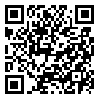Volume 20, Issue 2 (Paramedical Sciences and Military Health 2025)
Paramedical Sciences and Military Health 2025, 20(2): 1-9 |
Back to browse issues page
Download citation:
BibTeX | RIS | EndNote | Medlars | ProCite | Reference Manager | RefWorks
Send citation to:



BibTeX | RIS | EndNote | Medlars | ProCite | Reference Manager | RefWorks
Send citation to:
Valizadeh A, Faeghi F, Mohammadkarim A, Kargar Shouraki J. Quantitative Analysis of Signal Intensity-Time Curves on Dynamic Contrast-Enhanced Magnetic Resonance Imaging (DCE-MRI) for the Diagnosis of Breast Tumor. Paramedical Sciences and Military Health 2025; 20 (2) :1-9
URL: http://jps.ajaums.ac.ir/article-1-490-en.html
URL: http://jps.ajaums.ac.ir/article-1-490-en.html
1- Radiation Sciences Research Center, Aja University of Medical Sciences, Tehran, Iran. & Department of Radiology, Faculty of Paramedicine, Aja University of Medical Sciences, Tehran, Iran. , Vabdpira2020@gmail.com
2- Department of Radiology Technology, Faculty of Paramedical Sciences, Shahid Beheshti University of Medical Sciences, Tehran, Iran.
3- Radiation Sciences Research Center, Aja University of Medical Sciences, Tehran, Iran. & Department of Radiology, Faculty of Paramedicine, Aja University of Medical Sciences, Tehran, Iran.
4- Radiation Sciences Research Center, Aja University of Medical Sciences, Tehran, Iran.
2- Department of Radiology Technology, Faculty of Paramedical Sciences, Shahid Beheshti University of Medical Sciences, Tehran, Iran.
3- Radiation Sciences Research Center, Aja University of Medical Sciences, Tehran, Iran. & Department of Radiology, Faculty of Paramedicine, Aja University of Medical Sciences, Tehran, Iran.
4- Radiation Sciences Research Center, Aja University of Medical Sciences, Tehran, Iran.
Abstract: (127 Views)
Introduction: The aim of this study is to enhance the diagnostic accuracy of dynamic contrast-enhanced MRI (DCE-MRI) for the early diagnosis of breast cancer and to prevent unnecessary biopsies in benign tissues.
Materials and Methods: In this study, 108 female patients aged 48.1 ± 12.5 years underwent dynamic imaging, including 23 malignant and 85 benign mass cases. Imaging was performed using a 1.5 Tesla device. Time-Intensity Curves (TICs) were plotted using Mean Curve software and segmented into different sections by MATLAB software. Various components of the curves were analyzed between benign and malignant groups. Receiver Operating Characteristic (ROC) curves were generated for each segment, and the area under the curve (AUC) was compared among the different sections.
Results: Among the analyzed segments, the angle between the first and third time points showed the highest AUC (AUC = 0.97). Additionally, the angle between the first and fourth time points and the signal intensity at the first time point after injection also demonstrated high AUC values.
Conclusion: The results indicate that the angle between the first and third time points is superior to other angles and analyzed segments in differentiating benign from malignant lesions. This segment of the curve represents an angle that simultaneously includes data from both the early and delayed phases.
Materials and Methods: In this study, 108 female patients aged 48.1 ± 12.5 years underwent dynamic imaging, including 23 malignant and 85 benign mass cases. Imaging was performed using a 1.5 Tesla device. Time-Intensity Curves (TICs) were plotted using Mean Curve software and segmented into different sections by MATLAB software. Various components of the curves were analyzed between benign and malignant groups. Receiver Operating Characteristic (ROC) curves were generated for each segment, and the area under the curve (AUC) was compared among the different sections.
Results: Among the analyzed segments, the angle between the first and third time points showed the highest AUC (AUC = 0.97). Additionally, the angle between the first and fourth time points and the signal intensity at the first time point after injection also demonstrated high AUC values.
Conclusion: The results indicate that the angle between the first and third time points is superior to other angles and analyzed segments in differentiating benign from malignant lesions. This segment of the curve represents an angle that simultaneously includes data from both the early and delayed phases.
Type of Study: Research |
Subject:
full articles
Received: 2025/05/11 | Accepted: 2025/05/16 | Published: 2025/06/30
Received: 2025/05/11 | Accepted: 2025/05/16 | Published: 2025/06/30
Send email to the article author
| Rights and permissions | |
 |
This work is licensed under a Creative Commons Attribution-NonCommercial 4.0 International License. |




